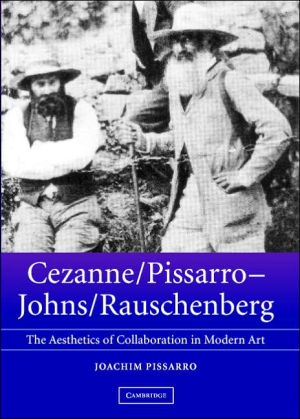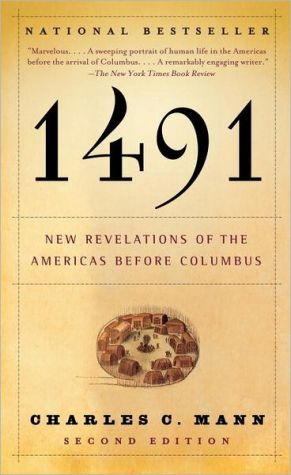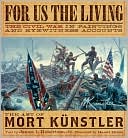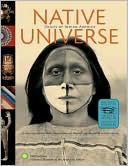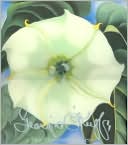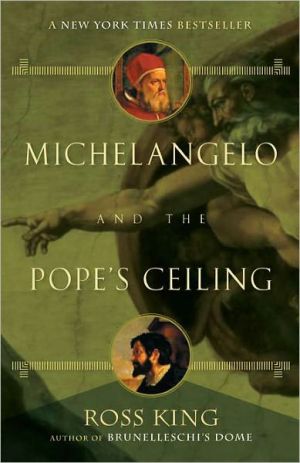Cezanne/Pissarro, Johns/Rauschenberg: The Aesthetics of Collaboration in Modern Art
This book presents a comparative study of two pairs of collaborative artists who worked closely with one another. The first pair, Cézanne and Pissarro, contributed to the emergence of modern art. The second pair, Johns and Rauschenberg, contributed to the demise of modern art. In each case, the two artists entered into a rich and challenging artistic exchange and reaped enormous benefits from this interaction. Joachim Pissarro's comparative study suggests that these interactive dialogues were...
Search in google:
A comparative study of two pairs of collaborative artists who worked closely with one another.
Cezanne/Pissarro, Johns/RauschenbergCambridge University Press0521836409 - Cezanne/Pissarro, Johns/Rauschenberg - comparative studies on intersubjectivity in modern art - by Joachim PissarroFrontmatter/PrelimsIntroductionHow much and how correctly would we think if we did not think as it were in community with others to whom we communicate our thoughts, and who communicate theirs to us!– Immanuel Kant1The concept of individuality is a reciprocal concept, i.e. a concept that can be thought only in relation to another thought, and one that (with respect to its form) is conditioned by another – indeed by an identical – thought. This concept can exist in a rational being only if it is posited as completed by another rational being. Thus this concept is never mine; rather it is – in accordance with my own admission and the admission of the other – mine and his; his and mine; it is a shared concept within which two consciousnesses are united into one.– Johann Gottlieb Fichte2A modernity which spoke with only one voice, or through only one voice, would already be moribund. This means that fundamental disagreements concerning modernity are in no sense a denial of modernity’s continuing force.– Dieter Henrich31. Photograph of Camille Pissarro (right) and Paul Cézanne (left), 1872–4.Image not available in HTML versionSOME PRELIMINARY QUESTIONSWhat happens when artists work together? More specifically, what is the role of the viewer of an artist’s work when the viewer happens to be another artist and the two of them work closely together? Or, in simple philosophical terms: what is the relationship of the self (the “I”) to the other as it affects the production of works of art? Addressing this from another perspective – focusing on the product rather than the producers – one might ask: What is the status of a work of art that is the result of communal thinking? These questions have provided the framework of my investigation. Naturally, the distinction between the makers and their objects is not absolute: the authors of works of art may be seen as setting the relationships with specific others in motion, whereas works of art and ideas may be regarded as being the results of these relationships – thus, a to-ing and fro-ing between works of art and the human relationships that are embedded in these works and make them possible (that shuttle between “art and life,” as Robert Rauschenberg is fond of saying) constitutes the main dynamics of this book.2. Photograph by Sidney B. Felsen of Jasper Johns (left) and Robert Rauschenberg (right) at Gemini in October of 1980. 10 × 8 in. (25.4 × 20.32 cm.). © Sidney B. Felsen, Los Angeles, California, 1980.Image not available in HTML version All these questions have at least one thing in common: they address the issue of a community of individuals (consisting of at least two people) producing art with one another, or with one another in mind. They presuppose that art is based on sets of relationships; these relationships, in turn, presuppose the existence of certain mutually accepted norms or rules. Thus, these relationships, from the start, can be seen as bridging the gap between aesthetics and ethics. What does thinking or working “in community with others,” as Immanuel Kant put it, mean when it comes to producing art? Kant spent much time and effort thinking about what it means to look at and to judge art by oneself and with others. He never dwelt very long, however, on the question of what it would mean to produce art “in community with others.” What are the conditions of possibility of such actions – or co-actions – and beyond this, what does it mean to produce art in common? While focusing on the larger philosophical implications of these issues, the present investigation examines the creation of works of art by two pairs of artists at one end and the other of the spectrum of modern art: Camille Pissarro and Paul Cézanne; Rauschenberg and Jasper Johns. These two pairs of artists each formed powerful relationships and engaged in very close artistic exchanges over a prolonged period of time – more than twenty years for Pissarro and Cézanne, and about eight years for Rauschenberg and Johns. Both of these artistic exchanges had a radical impact on the history of early and late modern art – even though neither of these associations has been much studied as such4 – but furthermore, the two collaborations raised (and continue to raise) questions addressing the very foundations of modern art, as well as its repercussions today. The distinction between these overused terms (“modern,” “modernism,” and “postmodernism”) needs to be succinctly clarified at the outset of this book. I hold the term “modern” (or “modernity”) to be a larger entity than both “modernism” and “postmodernism” – the latter two being symptoms of the modern phenomenon. I take the “modern era” to designate a moment in the history of mankind when a) societies gradually liberated themselves from the domination of time-honored modes of thinking and traditions and b) they were capable of drawing out of themselves new forms of thinking or new models of action. To be modern, therefore, implies being critical and autonomous. Modern art embodies this capacity for being critical of what precedes: thus when you look at the whole development of modern art, it looks like a long sequence of individuals, groups, or movements who all negated each other – each movement claiming truth for itself. At first sight, and on face value, modern art seems to make no sense. “Modernism” proposes a remedy to this problem: it is the most radical and fundamental enterprise to attempt to make sense out of modern art. In its most frequent currency in art history, this refers to a conception (exemplified by Clement Greenberg) of the development of modern art that is teleological (reaching out toward a pre-established goal that transcends and orients the evolution of modern art) and individual-based (this goal is achieved by a sequence of great artists, each of whom makes his own contribution to this development). According to modernism, therefore, modern art – despite its perplexing sequence of diverse forms – essentially follows a singular and linear direction. The term “postmodern” in art history refers to the demise of modernism, and more specifically, to the authors and artists from the 1960s onward who set out to question this model of explaining art, by arguing (through words and actions) that modern art was, in fact, far more complicated than modernism would have it and did not follow any particular direction (or followed opposing directions simultaneously): true art resisted preconceived models and transcended the traditional role of the artist as the chief individual orchestrating the work of art (the role of the spectator was held to be just as important). Incidentally, the term “postmodern” was first used in art history by Leo Steinberg to designate the works of Robert Rauschenberg. The postmoderns came to defend what Jean-François Lyotard called “the heterogeneity of the games of language”5 against the modernist overarching model that fabricated sense out of modern art. One of the main points of opposition between the modernist and postmodern conceptions is the role of the individual in the formation of a work of art: it is overemphasized in the modernist camp; it is almost completely denied in the postmodern era. One of the main points argued in this book is that neither stance is necessary, nor fecund. The author of a work of art need be neither a hero nor a corpse. S/he is neither god nor dead. In between these two extreme positions (summarily illustrated by the modernist and the postmodern conceptions), it is possible to articulate a position in which the author of a work of art can simply be a human subject, i.e., vulnerable and open to others, and searching for aesthetic solutions through a constant dialogical exchange – rather than having to articulate them according to a pre-established model (the modernist solution) or having to refute the very possibility of any aesthetic solution (the postmodern solution). The alternative to the heroic individual assertion of the work of art (modernism) and the nihilistic refutation of the role of the subject in the formation of a work of art (of which Roland Barthes’ “Death of the Author” is one of the early incarnations), there lies the possibility of thinking of the author of a work of art as a site that both opens itself to otherness, and yet preserves the possibility of a conscious and subjective set of decisions. Symptomatic of modernity at large, this conception of the author of a work of art critiques both the modernist and the postmodern stances by arguing for a more inclusive definition. What I will call the modern subject (or the modern author), therefore is partly on the side of modernism in that it claims that the subject (or the author) is not dead – despite the most extreme acts of iconoclasm that took place through the postmodern era – but it is also partly on the side of postmodernism in that, being alive and human, the subject is, however, frail, vulnerable (as all things human), and always open to all kinds of forces and outside factors. What interests me is to question the premises and the cultural and philosophical implications of the notion of individuality, especially when offset by the notions of otherness and of togetherness. The fact that this question of “one and another” was raised, discussed, or reflected upon by Pissarro and Cézanne, and by Rauschenberg and Johns, and embedded in much of their work as they were engaged in active collaboration with one another, is confirmed by the few documented testimonies we have of their exchanges. The exact terms in which these discussions took place can be partly retraced through the artists’ personal accounts, as well as testimonies, and provide a good sense of these two artistic dialogues. Such questions as “how do I stand in relationship to this other person?” and “how does this person make me more aware of myself as an other artist?” certainly seem to lie at the very core of these two dialogues. But then, given the importance of dialogues throughout the whole of modern art, it seemed interesting to ask why modernism as a system of interpretation of modern art appeared to miss out on this particular question.6 At the same time, these issues are still relevant to us today, and involve our present, not just our pasts. These two pairs of artists – through their engagement and openness to dialogues – offer a cogent critique and a pragmatic refutation of both the old modernist stance, and its more recent counterpart, the pastmodern all-out relativism. When we look at these two examples of artistic collaborations a century apart, from two continents, the blatant differences (historic, geographic, linguistic, cultural) that separate these two very distinct pairs of artists will also reveal something like a search for a “common truth” that still concerns us today. If at the end of a few decades of “post-structuralist” or “deconstructivist” theory that have claimed to leave us facing our own fractures, left to our own splintered selves, incapable of communicating with others and even with ourselves, the possibility that artists of major stature have opened up their selves to others may suggest that intersubjectivity offers, in fact, one possible avenue of reflection and of action that could take us beyond the aporias left over by the fast wrinkling postmodern era.ART HISTORY AS A HUMAN SCIENCE CONCERNED WITH THE STUDY OF HUMANKIND AND THE POSSIBILITY OF MUTUAL UNDERSTANDINGConcerned with the reasons that the notion of intersubjectivity has not received much attention within the history of modern art, I was led to focus on art history as a discipline distinct from other human and social sciences. Interdisciplinary efforts, or cross-fertilization, between different branches of the human and social sciences have not been regarded very kindly within traditional art history – notwithstanding major exceptions such as Meyer Schapiro and Aby Warburg. The human sciences ultimately share the same underlying question, “What is man?”7 or “What does it mean to belong to humankind?” or the negative complement of these questions: “What is not man?” or “What distinguishes man from what he is not?” No matter what form the question may take, it serves as the point of focus of all the human sciences – ethnography, anthropology, sociology, linguistics, and so forth – each of which, through its individual specialty, constitutes an attempt to comprehend the human phenomenon. Art history tacitly shares these premises: after all, it too focuses on a particular kind of product of human activity. Yet art history – at least in its traditional iterations – has tended to cultivate a certain aloofness or isolation from these seemingly unrelated disciplines. This was due to two dominant aspects of art history: the positivist claim that art objects can be described as they are in themselves; and the dogmatic belief that it is possible to classify those objects by their aesthetic merits according to an indisputable axiological system. In contrast to other human sciences, art history has lacked a fluidity of method and the readiness with which the practitioners in those fields question and check their own premises, methods, and results against those of other disciplines. Such openness between disciplines could only appear threatening to the time-honored and canon-oriented modus operandi of art history’s classification systems. Kant was one of the first philosophers who questioned the criteria by which such a canon could exist: How can a canonically great work of art be instituted as such if there is not (at least) some broad agreement upon the excellence of such a work of art, and therefore, a certain mutual understanding about the greatness of such a work of art? On the other hand, this demand for universal assent on an aesthetic judgment (as Kant articulated it) is never anything more than a demand that may or may not be satisfied, or that may be met by some dissent. Therefore, this claim cannot be absolute – it relies on the possibility of people arguing about it, agreeing or disagreeing. It relies on intersubjectivity – and on mutual understanding whose base is ever so fragile. The issue of the possibility of “mutual understanding” – “Verständigung” is a term used by the philosopher Jürgen Habermas – has oriented much of the development of human sciences during the last hundred years or so. This book is not only a study about intersubjectivity as set in motion and experienced by two pairs of – early and late – modern artists; this book is also the result of an intersubjective methodology. My conviction that disciplines, just like individuals, should (if not collaborate with each other) make an open effort to know what they might gain from a comparative or joint approach has led me to take an interdisciplinary approach in investigating what it means for individual artists (or for artists as individuals) to think and work in common, an idea that has roots in more than one discipline. The methodology of this book was, therefore, partly suggested by its own content. Individuals gain in “transcending” their individualities and opening up to others – even if this exchange requires no less than a breaking through of one’s own boundaries, and therefore doesn’t come easy – and the same lesson applies to the practice of art history. Transcending one’s own boundaries and “opening up” to other disciplines among the human sciences can only produce exciting and fruitful results that, in the end, help us to understand better what Rauschenberg calls the “gap between art and life.”8THE FALLACIES OF MODERNISM AND THE HISTORICIST APPROACH TO ART HISTORYThis intersubjective approach contrasts with the predominant individual-oriented perspective that prevailed in the tradition of modern art history. Largely historicist in approach, modernism emphasizes the high moments and the key individuals that contributed to the enterprise. The individual-oriented direction at work in modernism is locked within a more complex argument: individual artists, one by one, appear to be the carriers (or the instruments) of a logic over which they have no control. This logic is at work in historicism – and echoes what Georg Wilhelm Friedrich Hegel called the “ruse of reason”: The movement of history unfolds itself behind the backs of the artists who think they act as free and autonomous agents, but who, unbeknownst to themselves, accomplish the grand scheme of history. Clement Greenberg was the chief exponent of this theory in art history.9 Greenberg’s underlying sources derive from philosophical texts. His oft-quoted loyalty to Kant, however, whom he referred to as the “first real modernist,”10 must be questioned, as some philosophical dissemblance seemed to lie at the core of Greenberg’s ideology: Although pledging allegiance to Kant, he seemed in fact far closer to Hegel, in terms of his conception of the development of the history of art, and to Friedrich Wilhelm Nietzsche, in terms of his conception of the roles of individuals in history. An intersubjective approach, on the other hand, less ambitious, resembles a day-to-day account of what happens in ordinary encounters or in everyday conversations: there is no preconceived model of how things will unfold at the end. As case studies, works of art that resulted from the two artistic interchanges examined here both stemmed from and produced a multiplicity of dialogues. In these, the roles of producer and viewer within each pair of artists were consistently interchangeable: each artist was not just “thinking of the Other” (to use the term of another philosopher, Emmanuel Lévinas), but also making and viewing art with the other in mind. The present perspective produces both a theoretical loss and a practical gain. The loss consists in giving up the powerful explicatory engine that the logic of modernism employed to provide a source of monolithic meaning for works of art. However, in my opinion, the gains are worth taking this loss: Works of art are then seen as embodying the artists’ freedom of action and, in addition, their freedom of co-action (participating in an interchange with another, or others). Instead of being the mark of a logic that transcends the art and the artist, the works of art through these dialogues regain a different status, manifested by their capacity to function according to their own rules, and their capacity and need to open themselves to others. Hence, the importance in this essay of texts by Kant and Johann Gottlieb Fichte, Kant’s most brilliant student and critic. Kant’s notion of “thinking in community with others,” although conspicuously absent from Greenberg’s texts (despite his claim of allegiance to Kant), is an essential concept in exploring these artistic interchanges, as indeed is the Fichtean concept of “reciprocal individuality.” We thus return to the notion of dialogue that constitutes the cornerstone of this book. The works of art discussed in this volume represent two sets of dialogues between artists, offering remarkable case studies on the nature of communication from the beginning to the end of our modern era. These two artistic interchanges demonstrate that communication and freedom, intersubjectivity and individualism, are not (always or necessarily) incompatible.DEAD HISTORY VS. INTERPRETIVE HISTORYFichte wrote, “To bring life into the spirit of investigation is also a true and important science.”11 I see an analogy between the way philosopher Alain Renaut conceives of the task of the historian of philosophy and the way I regard the trade of the art historian.12 Both disciplines (the history of philosophy and the history of art) are “histories” of another discipline. The taxing question asked by Renaut is how to write a history of philosophy that can be philosophical (or meaningful), and not merely present a succession of uninterpreted facts or ideas. How much involvement, therefore, and what type of involvement may the historian have with his object? Will the historian aim only “at accurately restoring some particular corpus,” or should he or she also bring out “the meaning of history over and above its purely archaeological dimension?”13 The two projects are not necessarily exclusive of each other, and I would even venture to say that when either one is excluded, some of the most reductive productions occur – whether in the history of philosophy, or in the history of art. In this book, I do not focus on works of art in isolation – neither in isolation from each other, nor in isolation from the research produced in other disciplines. Focusing on the unique status of a work, an œuvre, or an individual artist is a thing of the past.14 Instead, this book examines analogies and relationships between these works, on three levels: between those produced by one artist and another; between those produced by one pair of artists and another pair of artists; and between what I might call the operating concepts, or principles, that guided the practice of these artists and analogous concepts used in other fields. Through this method, I hope to avoid presenting works of art as if they existed in a vacuum, or were authorless or lifeless. By so doing, I hope also to avoid contributing to a “dead” history of art.15 The history of philosophy and the history of art encounter the same challenges. The practice of the history of art is still largely governed by concepts of “influence”16 and “chronological precedence,” the legitimacy or effectiveness of which are seldom questioned. The result of this method in the history of humanities is something like “a gallery of great books that are all equally estimable, differentiated in the mind of the historian only by the greater or lesser enjoyment that reading them brings.”17 Of course, ideas are not works of art – and vice versa. But, five minutes spent reading Pissarro’s or Cézanne’s correspondence, or conversing with either Johns or Rauschenberg, suffice to confirm that ideas are essential to the making of these artists’ works, and that some of these ideas continue to be relevant to our own ideas and, more pointedly so, to the ideas of those who continue to produce art today. These ideas are no mere abstractions floating in the idealist sky. They touch us, affect us, and make the relationships we have with works of art, or any other human productions, come alive. Likewise, their works constantly solicit us – their viewers – and raise questions or issues that continue to be riveting (or not), and, when they do engage our interest, are perhaps the principal reason we return, over and over, to the contemplation of those works of art. Let me be clear: I am not trying to single out the four artists in question and suggest that they form a kind of pantheon of “thinking artists”; indeed, many of the issues that will be seen as emerging out of the relationships between and among these two pairs of artists could be detected, in different forms and with different emphases, in other artists’ works. The criteria of selection of the four artists was, however, made all the easier as, two by two, Pissarro and Cézanne and Rauschenberg and Johns presented two cases of intense, prolonged artistic interchanges in the history of modern art. Naturally Pablo Picasso and Georges Braque, or Henri Matisse and Picasso, André Derain and Maurice de Vlaminck, as well as Robert and Sonia Delaunay, and closer to us, Gilbert and George, Andy Warhol and Jean-Michel Basquiat, Hilda and Bernd Becher, Dinos and Jake Chapman, or Jane and Louise Wilson, among countless others, also count as “intersubjective artists.” Indeed I would argue that intersubjectivity plays a role in all artistic projects, even within the most individualistic projects. What led me to select Pissarro and Cézanne was that the interchange between the two nineteenth century artists went on for more than twenty years, and played as critical a role in shaping the development of future generations of artists as the brief interaction between Picasso and Braque did, but the relationship between Pissarro and Cézanne has been far less studied.18 Rauschenberg and Johns offered a compelling complementary example because, together, they are often described as having brought the modernist enterprise, initiated by the Impressionists, to a close – or, at the very least, as having radically questioned the premises of modernism through their art. These two artistic interchanges, therefore, offer an appropriate gauge of the significance and the limits of intersubjectivity at both ends of the modernist spectrum. Moreover, these two pairs of artists proved (unexpectedly) to have far more in common than the considerable historical, linguistic, and cultural divide between them would lead us to assume; indeed, they often seem to be uttering a closely related language – the language of modernity (rather than modernism), with its obsessions, its recurrent themes, its limits, its anxieties, and its horizons of hope. These two pairs of artists have a lot to “tell” each other. Having come across certain parallels between Pissarro’s works and Rauschenberg’s, I once asked Rauschenberg whether he had ever looked at Pissarro’s works. Rauschenberg, after a few seconds of reflection, half-jokingly replied that he had not paid attention to Pissarro, but that Pissarro had paid a great deal of attention to him. Indeed, in the course of writing this book, I often felt as if Pissarro could have been commenting very convincingly about works by Rauschenberg; likewise, Johns was entering into a conversation not just with Rauschenberg, but also with Cézanne. As composer John Cage once noted about Johns and Rauschenberg, and their friendship with him and choreographer Merce Cunningham, “Each seemed to pick up where the other left off. The four-way exchanges were quite marvelous.”19© Cambridge University Press
Pt. 1Beginnings : Pissarro and Cezanne, Johns and RauschenbergPt. 2Modernism as a chain of crests : Nietzsche, Fry, Greenberg, RewaldPt. 3The self in relation to the otherPt. 4Dialogues : intersubjectivity at work between Pissarro and Cezanne, and between Johns and RauschenbergPt. 5An art history made for and by artists
